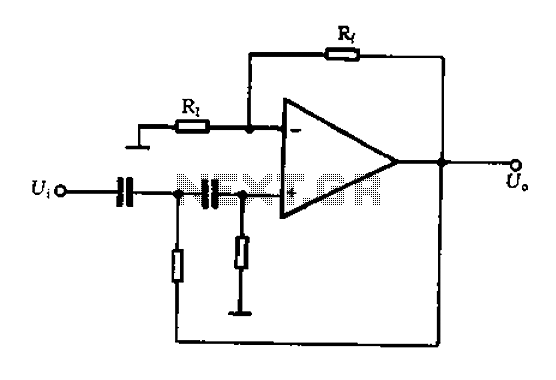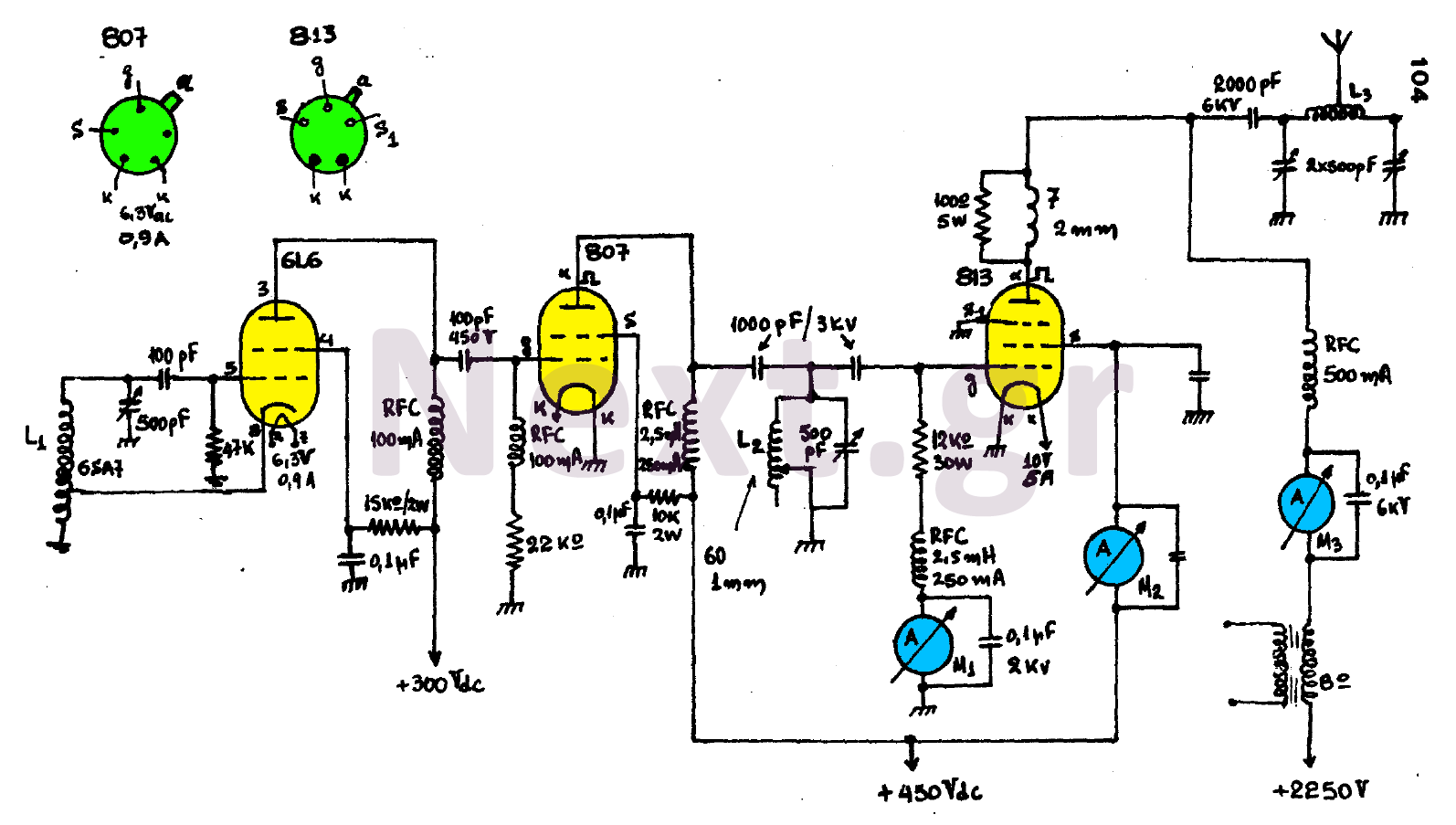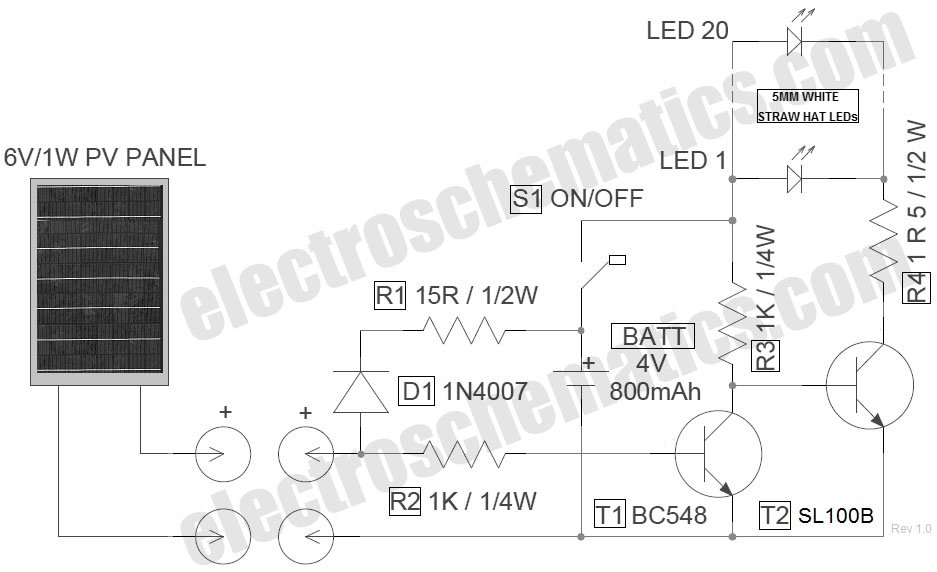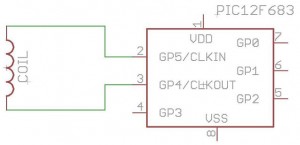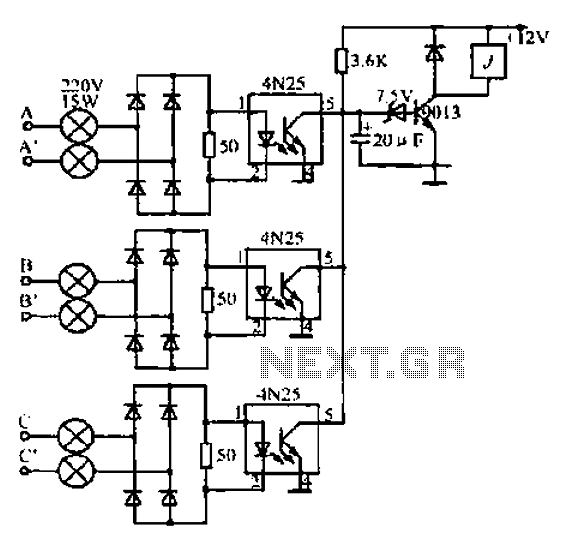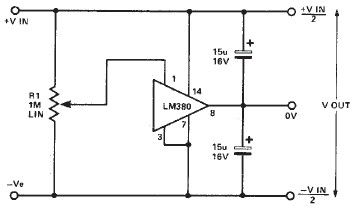
Free Energy Circuit
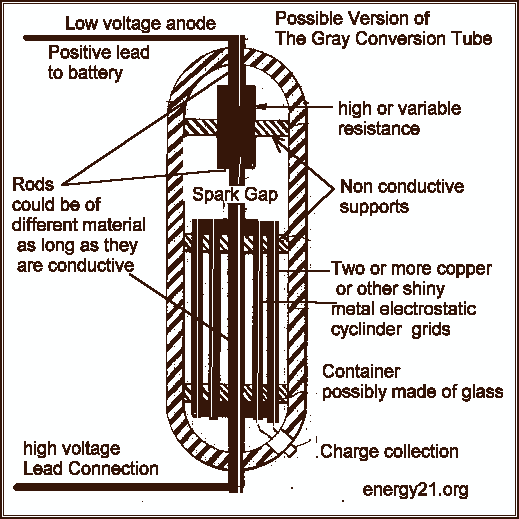
This type of design can produce a very high amperage current for a fraction of a second that can be used to do some useful work if properly harnessed. A point to remember is that Paul Baumann built his first device in prison and as such did not have access to exotic materials as is often described in other theories of how the Testakica was said to have worked. One would conclude from this that the home experimenter should also be able to build such a device from materials from around the house. More: Getting the high voltage to start with.
There are two main types of methods that are known.
STEP UP VOLTAGE transformer
As used by Edwin Gray in his invention, the charging circuit is basically a 12-volt battery being driven by vibrating relays to pulse the power through a step-up transformer to raise voltage from 12 volts to approximately 3000 volts. This is then rectified and used to charge a bank of capacitors.
This bank of capacitors is then discharged for a nanosecond period into a specially designed tube which consists of a copper rod, a spark gap, some carbon, and a series of concentric rings around the spark gap. The resulting power collected on those rings is then fed to the earth via an air induction transformer or to the positive terminal of the charging batteries. The power appearing at the secondary of this air induction transformer is then used to power the motoring coils of the specially designed motor.
High Voltage Induction Coil
Another method used in early X-ray machines and also by Marconi in his first radio transmission across the Atlantic Ocean is the induction coil. This device consists of two coils wound on a metal rod: a small number of primary windings in heavier gauge wire and a large number of finer gauge windings, essentially functioning as a step-up transformer. The primary magnetic field operates a switch that controls the power to the primary winding.
This causes the magnetic field in the primary coil to build up and down, which then induces an alternating high voltage output in the secondary coil, most likely in a square wave form.
Electrostatic Generation of High Potential
The individuals at the Swiss Community of Merithnita appear to be using a Wimshurst machine to generate the high voltage needed to run their free energy device. This device was a popular means to generate high voltage in the late 19th century and early 20th century. At some stage, it was used to provide the high voltage needed for early X-ray machines in hospitals, but today it is usually superseded by modern electronic versions or the Van de Graaff machine in modern physics laboratories.
The Wimshurst design consists of two counter-rotating disks made of plastic or glass, upon which metal foil sections are placed and separated from each other. These disks are spun in opposing directions by means of a belt that can be either hand-driven or motor-driven. Brushes mounted at various points near the disks collect the charge without touching the disks and usually conduct it to a capacitor storage position or discharge the built-up charge through a spark gap.This type of design can produce a very high amperage current for a faction a second that can used to do some useful work if properly harnessed. A point to remember is that Paul Baumann built his first device in prison and as such did not have access to exotic materials as is often described in other theories of how the Testakica was said to have worked.
One would conclude from this, that as such, that the home experimenter should also be able to build such a device from material from around the house Getting the high voltage to start with. There are two main types of methods that I am aware of are they are. STEP UP VOLTAGE transformer As used by Edwin Gray in his invention the charging circuit is basically a 12 volt battery being driven by vibrating relays to pulse the power through a step up transformer to raise voltage from 12 volt to approx 3000 volts this then, is rectified and used to charge a bank of capacitors. This bank of capacitors is then discharged for a nano seconds period into special design tube which seems nothing than a copper rod a spark gap some carbon and a series of concentric rings around the spark gap and the resulting power collected on those rings is then fed to the earth via a air induction transformer or to the positive terminal of the charging batteries .
The power appearing at secondary of this air induction transformer is then used to power the motoring coils of the specially design motor. High Voltage Induction Coil Another method used in early X-ray machine and also Marconi in his first radio transmission across the Atlantic ocean was the induction coil basically a two coils wound on a metal rod a small number of primary windings in heavier gauge wire and large number of finer gauge winding ,basically a step up transformer using the primary magnetic field to operate a switch that controls the power to the primary winding.
This causes the magnetic field in the primary coil to build up and down which then causes by induction an alternating high voltage output in the secondary coil.(most likely a square wave) See circuit above. Electrostatic generation of high Potential. The People at the Swiss Community of Merithnita see to be using a wimshurst machine to generate the high voltage needed to run their free energy device.
The device was a popular means to generate high voltage in the late 19 century and early 20 century . It role was at some stage used to provide the high voltage needed for early x-ray machines in hospitals but today is usually superceded by the modern electronic version or the Van de Graaf machine in modern physics laboratories today.
The wimshurst design is basically two counter rotating disks of a plastic or glass material upon which are place metal foil sections separated from each other. This devices discs are spun in opposing directions by means of a belt either hand driven or motor driven.
Brushes mounted at various points near the disks metal plates but not touching the disk collect the charge and usually then conduct it to a capacitor storage position or discharge the built up charge through a spark gap. 🔗 External reference
There are two main types of methods that are known.
STEP UP VOLTAGE transformer
As used by Edwin Gray in his invention, the charging circuit is basically a 12-volt battery being driven by vibrating relays to pulse the power through a step-up transformer to raise voltage from 12 volts to approximately 3000 volts. This is then rectified and used to charge a bank of capacitors.
This bank of capacitors is then discharged for a nanosecond period into a specially designed tube which consists of a copper rod, a spark gap, some carbon, and a series of concentric rings around the spark gap. The resulting power collected on those rings is then fed to the earth via an air induction transformer or to the positive terminal of the charging batteries. The power appearing at the secondary of this air induction transformer is then used to power the motoring coils of the specially designed motor.
High Voltage Induction Coil
Another method used in early X-ray machines and also by Marconi in his first radio transmission across the Atlantic Ocean is the induction coil. This device consists of two coils wound on a metal rod: a small number of primary windings in heavier gauge wire and a large number of finer gauge windings, essentially functioning as a step-up transformer. The primary magnetic field operates a switch that controls the power to the primary winding.
This causes the magnetic field in the primary coil to build up and down, which then induces an alternating high voltage output in the secondary coil, most likely in a square wave form.
Electrostatic Generation of High Potential
The individuals at the Swiss Community of Merithnita appear to be using a Wimshurst machine to generate the high voltage needed to run their free energy device. This device was a popular means to generate high voltage in the late 19th century and early 20th century. At some stage, it was used to provide the high voltage needed for early X-ray machines in hospitals, but today it is usually superseded by modern electronic versions or the Van de Graaff machine in modern physics laboratories.
The Wimshurst design consists of two counter-rotating disks made of plastic or glass, upon which metal foil sections are placed and separated from each other. These disks are spun in opposing directions by means of a belt that can be either hand-driven or motor-driven. Brushes mounted at various points near the disks collect the charge without touching the disks and usually conduct it to a capacitor storage position or discharge the built-up charge through a spark gap.This type of design can produce a very high amperage current for a faction a second that can used to do some useful work if properly harnessed. A point to remember is that Paul Baumann built his first device in prison and as such did not have access to exotic materials as is often described in other theories of how the Testakica was said to have worked.
One would conclude from this, that as such, that the home experimenter should also be able to build such a device from material from around the house Getting the high voltage to start with. There are two main types of methods that I am aware of are they are. STEP UP VOLTAGE transformer As used by Edwin Gray in his invention the charging circuit is basically a 12 volt battery being driven by vibrating relays to pulse the power through a step up transformer to raise voltage from 12 volt to approx 3000 volts this then, is rectified and used to charge a bank of capacitors. This bank of capacitors is then discharged for a nano seconds period into special design tube which seems nothing than a copper rod a spark gap some carbon and a series of concentric rings around the spark gap and the resulting power collected on those rings is then fed to the earth via a air induction transformer or to the positive terminal of the charging batteries .
The power appearing at secondary of this air induction transformer is then used to power the motoring coils of the specially design motor. High Voltage Induction Coil Another method used in early X-ray machine and also Marconi in his first radio transmission across the Atlantic ocean was the induction coil basically a two coils wound on a metal rod a small number of primary windings in heavier gauge wire and large number of finer gauge winding ,basically a step up transformer using the primary magnetic field to operate a switch that controls the power to the primary winding.
This causes the magnetic field in the primary coil to build up and down which then causes by induction an alternating high voltage output in the secondary coil.(most likely a square wave) See circuit above. Electrostatic generation of high Potential. The People at the Swiss Community of Merithnita see to be using a wimshurst machine to generate the high voltage needed to run their free energy device.
The device was a popular means to generate high voltage in the late 19 century and early 20 century . It role was at some stage used to provide the high voltage needed for early x-ray machines in hospitals but today is usually superceded by the modern electronic version or the Van de Graaf machine in modern physics laboratories today.
The wimshurst design is basically two counter rotating disks of a plastic or glass material upon which are place metal foil sections separated from each other. This devices discs are spun in opposing directions by means of a belt either hand driven or motor driven.
Brushes mounted at various points near the disks metal plates but not touching the disk collect the charge and usually then conduct it to a capacitor storage position or discharge the built up charge through a spark gap. 🔗 External reference
